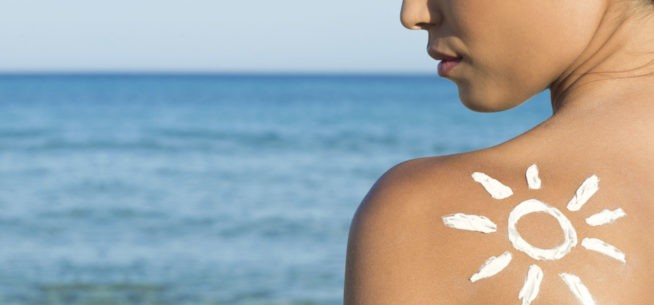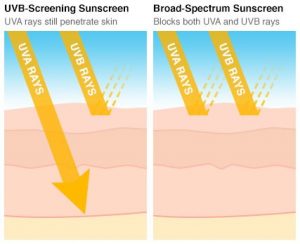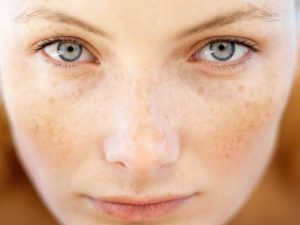HOW TO CHOOSE AND USE SUNSCREEN EFFECTIVELY
As summer hits Dubai, it’s time to restock the sunscreen supply shelf. While year-round sunscreen application is important, there are factors to pay attention to when the days are longer and the sun’s rays get stronger.
There are so many sunscreens and it can be overwhelming in choosing the best one for you and your family. I will attempt to give some basic information about sunscreens to help you choose and use your sunscreens better!
Sunscreens can be of two types, the organic (chemical sunscreens) or the inorganic ( physical sunscreens). Organic filters — Organic filters include a variety of aromatic compounds that absorb UV radiation and convert it to a negligible amount of heat. Inorganic filters are mineral compounds such as zinc oxide and titanium dioxide that are able to reflect and scatter UV light over a wide range of wavelengths. Micronized preparations can also absorb UV radiation. Inorganic sunscreens are stable, and in contrast to organic filters, have a low irritating and sensitizing potential. Most sunscreens nowadays are generally combinations of both organic and inorganic sunscreen products that are able to absorb both UVB and UVA radiation.

What is SPF?
SPF on the bottle of sunscreen stands for Sun Protection factor. It basically measures how well a product protects against UVB. SPF refers to the ratio between the time taken for the skin to redden (called as minimal erythema dose) in skin protected with sunscreen versus that in the non-protected skin. It is assessed in experimental conditions using a light source that simulates the solar radiation on the skin of light-skinned volunteers who have applied an amount of sunscreen corresponding to 2 mg/cm2.
For example, if it takes 30 minutes for the redness to develop without sunscreen, an SPF 30 sunscreen will ideally prevent reddening for 30 times as long,i.e. about 15 hours.
Considering that SPF was determined using experiments with 2 mg/cm2 of sunscreen, which is way more than anyone uses in real life (we generally use less than 1/3 of what we are supposed to), we are all getting less protection than we think. For that reason, SPF 30 or more is usually recommended.
Why not SPF 100?
There is a very miniscule increase in protection above SPF 50, so much so that the FDA proposed labeling of anything higher than SPF 50 as an SPF 50+ sunscreen. Judging just by the higher SPF number can be very misleading, giving a false sense of security- people are a lot more likely to use it improperly or stay in sun for longer without reapplying. While an SPF of 100 blocks about 99% of harmful UVB rays, while properly applied SPF 50 blocks 98% of the same rays.As most UV filters are dissolved in oils, the higher SPF sunscreens also tend to be more heavy and oily. Additionally, there is some evidence that very high SPF makes it more difficult to chemically formulate a sunscreen with great UVA protection, which is just as important as UVB.
Why is broad spectrum sunscreen important?
An SPF rating only refers to UVB protection only and indicates the percentage of sun rays being blocked. However, there are two types of UV (ultraviolet) rays harm the skin: UVA rays that prematurely age the skin, causing wrinkles and UVB rays which burn the skin. Too much exposure to both can cause skin cancer. Therefore, it’s important to choose a broad-spectrum or full-spectrum sunscreen to protect your skin from all UV rays.

Apart from looking at the SPF. Also look for the UVA protection rating ( it is a 5-star rating system proposed by the European Union) or look for the term broad spectrum. You can also look for ingredients such as Zinc Oxide, Mexoryl™, Avobenzone, and Tinosorb™, all of which are excellent UVA blockers.
How to use a sunscreen properly?
Regardless of a sunscreen’s SPF or whether it is broad-spectrum, the factor that makes a sunscreen most effective has everything to do with the person applying the sunscreen.
● Apply generous amounts of sunscreen at least 15-20 minutes prior to going in the sun. The simplest way to remember is to use about 1/2 tsp for the face and neck and 2 tbsp (one shot glass full) for the entire body.
● Use sunscreen on all skin surfaces that are exposed to the sun. Don’t forget ears, lips, tops of the feet and even your scalp if it is exposed.
● Reapply! The most common reason for sunburn is missing an area of your body and forgetting to reapply every two hours. Reapply every two hours, and more frequently if you are immersed in water or after heavy sweating (regardless of whether or not a sunscreen is water resistant).
● Wear sunscreen even on cloudy days (UV light passes through clouds) and in winters.
Always remember, the best way to protect yourself from the sun is sun avoidance and physical barriers such as sun protective clothing, hats, and sunglasses in addition to your sunblock .wear hats, sunglasses, as well as seek shade under umbrellas. Try to avoid sun exposure between 10am to 4pm. Wear clothing in the sun with tight weaves and knits because they provide the most sun protection.
Which sunscreen to use if I have acne prone skin?
A lot of people complain of breakouts or a dull heavy appearance after using sunscreens. Here are some tips which might be of use. Look for the terms “non-comedogenic” and/or “non-acnegenic”. Comedone is the medical term for blackheads and whiteheads, and products that are labeled as non-comedogenic are formulated to be less likely to clog your pores. While this doesn’t guarantee that a product won’t make you break out, it may be less likely to do so. Lightweight sunscreen lotions with added sunscreen ingredients that are labeled as “non-comedogenic” often work well for acne-prone skin.people with excessively oily skin might find that gel-based sunscreens suit them better.
Some experts think that acne-like breakouts may result from the heat that is given off when the sunscreen’s active ingredients absorb the sun’s harmful rays. In these cases, switching to a sunscreen that uses only titanium dioxide and/or zinc oxide for sun protection may be helpful.
Which sunscreen to use if I have highly sensitive skin?
Many people feel itching/burning sensation and seem to be allergic to every regular sunscreen. The best bet in such cases is to try a purely physical sunscreen. While regular sunscreens have a fairly high rate of allergic contact dermatitis, physical blockers have almost no reactive potential.For those who suffer from flushing/ red pimples, skin burning and/or sensitivity (rosacea), physical sunscreens are the best bet. Rosacea is very sensitive to heat and chemical sunscreens produce an imperceptible amount of heat, potentially flaring up rosacea, acne, and heat sensitive skin conditions like melasma. physical sunscreens are inert and simply reflect away the UV rays, hence best suited for these conditions. in many cases of rosacea, just a regular use of sunscreens can drastically improve the condition of the skin.
I have melasma, any special sunscreen required?
Melasma is skin pigmentation occurring due to sun exposure or pregnancy that is seen mainly on the cheekbones. It is a common problem in our part of the world. It is very sensitive to heat as well as UV rays. Recently, melasma has also been shown to be sensitive to visible light. Wearing sunscreens ( esp those with physical sunscreens ) is very important in this condition even when indoors. A number of sunscreens with protection for visible and infrared radiation are now available in the market that is especially suited for this condition.

Which Sunscreen is best for beach/pools?
A broad-spectrum sunscreen with an SPF of at least 30 is best.Because most UV filters are dissolved in oil, higher SPF products tend to be heavier than those with lower SPF values Water-resistant (now labeled as 40 or 80 minutes) is also a must. The key is to reapply every 2 hours! A lot of people prefer using sprays, as it is much easier to apply on larger surfaces. However, there is also a chance that you might underapply. the jury is still out on the possible dangers of inhaling the aerosolized chemicals. If you do use sprays, make sure to use liberal amounts on your body. Sprays should never be directly used on the face.
Which sunscreen is best for athletic use?
Intense exercise or very hot conditions cause you to sweat like it’s raining. Even water-resistant sunscreens can be tough to keep on and forget to reapply on that wet skin. The key is to reapply, particularly after intense sweating. Sport labeled sunscreens are usually the water resistant ones (up to 80 minutes) but they tend to be heavier on the skin. it is recommended you use UPF moisture-wicking clothing for any sport outdoor activities that require long hours in the sun. They keep you cool as well as add to the much-needed sun protection.
I cannot reapply, it will ruin my makeup!
Reapplying sunscreen is important even if u have put makeup on. you can simply take a small amount and pat it onto the skin, and mix lightly. if you are worried about smudging your makeup. There are SPF containing makeup products which can help add another layer of protection from the sun. Most mineral powders have a sun protection factor. However, they are not a substitute for your sunscreen!
Do children require sunscreen as well?
Avoid using sunscreens in babies less than 6 months of age.
Children should be primarily protected with clothing, hats, and sunglasses, and sunscreen should be relied on for areas that remain exposed. Encourage sun-safe behavior in your children; have them play in the shade, avoid direct sunlight whenever possible between 10am and 4 pm.

You may apply a broad-spectrum, water-resistant sunscreen with an SPF of 30 or higher to their children’s exposed skin that is not covered by protective clothing, The sunscreen should be reapplied approximately every two hours. Look for the ingredients zinc oxide or titanium dioxide, as they are less irritating to the skin.
You don’t always need a specialized sunscreen for your child.There are no sunscreen ingredients that are specifically approved (or banned) in children vs adults.
What About “Natural” Sunscreens? I don’t want to use chemicals on my face!
Sunscreens, like all things in our lives (including the water we drink and all the foods we eat), are made up of chemicals. Despite their extensive use over decades, there is no scientific evidence that is of reasonable quality that shows that any of the sunscreen ingredients in the FDA-approved brands currently available in the market are harmful when used in human beings.
Products marketed as “natural” are often mineral sunscreens, which use only zinc oxide and titanium dioxide as their active ingredients. These ingredients are known as physical filters; inert metals that sit on the skin and absorb, scatter or reflect light (in contrast to chemical filters such as avobenzone or octocrylene that absorb ultraviolet light and convert it to heat).
While chemical filters can sometimes irritate sensitive skin and can rarely cause allergic reactions, physical filters have the advantage of being gentle, stable (meaning that they are not degraded by sunlight) and non-allergenic. They can be a good choice for young children (older than 6 months), and for those with eczema or sensitive skin. Their disadvantage lies with the fact that zinc oxide is a less efficient ingredient, meaning that ounce for ounce it provides a lesser degree of protection.
In general, a well-formulated “chemical” sunscreen will provide a higher degree of protection than most mineral sunscreens, and it is for this reason that I usually suggest sunscreens that use chemical filters.
Ultimately, the best sunscreen is the one that you use! Remember it is important to wear your sunscreen every day. not only does it help prevent skin cancer, but also skin aging. Experiment with the consistency of different products, looking for a “broad-spectrum” product with an SPF of 30 and reapply.
So go ahead, use your sunscreen properly and have fun in the sun!






